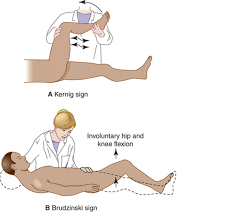Yergasons Test
Yergason’s test is a physical examination test used to check your biceps tendon, mainly the long head of the biceps tendon. The biceps muscle tendon connects your biceps muscle to the top of your shoulder joint.
This test can also help to examine a tear in your transverse humeral ligament, SLAP tear, and biceps tendonitis.
Table of Contents
Purpose of Yergason’s test
- The purpose of the Yergason’s Test is to look for pathologies of the biceps tendon, such as bicipital tendonitis and an unstable superior labral anterior-posterior (SLAP) lesion, with the Yergason’s Test.
Technique of Yergason’s test
- The patient should be in the anatomical position, seated or standing, with the humerus in a neutral position and the elbow in a pronated 90-degree flexion position.
- The therapist applies manual resistance by wrapping the hand around the distal forearm, which is located just above the wrist joint, and the patient is instructed to externally rotate and supinate their arm.
- If the pain is reproduced in the bicipital groove and a biceps or SLAP lesion is suspected, the Yergason’s Test is considered positive. Damage to the transverse humeral ligament, which covers the intertubercular sulcus, should also be considered if the patient experiences a “clicking” sound during the examination.
Evidence
| Sensitivity | 0.43 |
| Specificity | 0.79 |
| Positive Likelihood Ratio | 2.05 |
| Negative Likelihood Ratio | 0.72 |
Clinical Background
- The test was developed in 1931 primarily for the purpose of identifying bicipital tendonitis.
- It is yet at this point obvious that the torments might emerge from tenosynovitis, tendinopathy, or a SLAP sore. Additionally, it gains access to the transverse humeral ligament’s capacity to maintain the biceps tendon in the bicipital groove.
- The biceps tendon is linked to rotator cuff disease in the elderly and isolated overuse injuries in youth.
- It has been discovered that the test is more effective at diagnosing SLAP lesions than biceps disorders.
Variations
- One common variation of the test involves the patient moving the forearm into the supine position as well as the shoulder into external rotation against resistance. Because it is a complicated movement, the patient is encouraged to first perform it without resistance to ensure an effective response when resistance is applied.
Clinical Tip
- During the test, the free hand can palpate over the intertubercular sulcus (bicipital groove) to detect any unusual subluxation, “clicking,” or “snapping” after the elbow has been stabilized between the therapist and the patient’s waists. The patient may follow the instructions of the physical therapist.
FAQs
A positive result on the Yergason test indicates a shoulder issue. What you and your doctor feel is what will determine the exact issue. If your doctor feels your tendon snapping or popping out of place, it most likely means that your humoral ligament is torn.
Yergason’s test has a responsiveness of 43% and explicitness of 79% for identifying issues with your biceps ligament
Impingement, bursitis, and biceps tendinitis are other names for rotator cuff tendinitis. All of these refer to the same issue under different names. They are referring to pain and swelling in the bursa and tendons of the cuff. The bursa is a delicate sack that contains a limited quantity of liquid and pads the joint.
The greater the negative predictive value of a test, the less likely it is that a person with a negative result will have the disease. The higher the positive predictive value and the more specific the test, the less likely it is that a person with a positive result will be healthy.
During a physical examination of a patient who has biceps tendinitis, the most common isolated finding is tenderness at the bicipital groove point. Ultrasonography is the best methodology for assessing segregated biceps tendinopathy extra-articularly. Magnetic resonance imaging should be performed if additional pathology is suspected.



![Test for tight retinacular [ collateral ] ligaments](https://samarpanphysioclinic.com/wp-content/uploads/2023/06/Test-for-tight-retinacular-_-collateral-_-ligaments.webp)




2 Comments